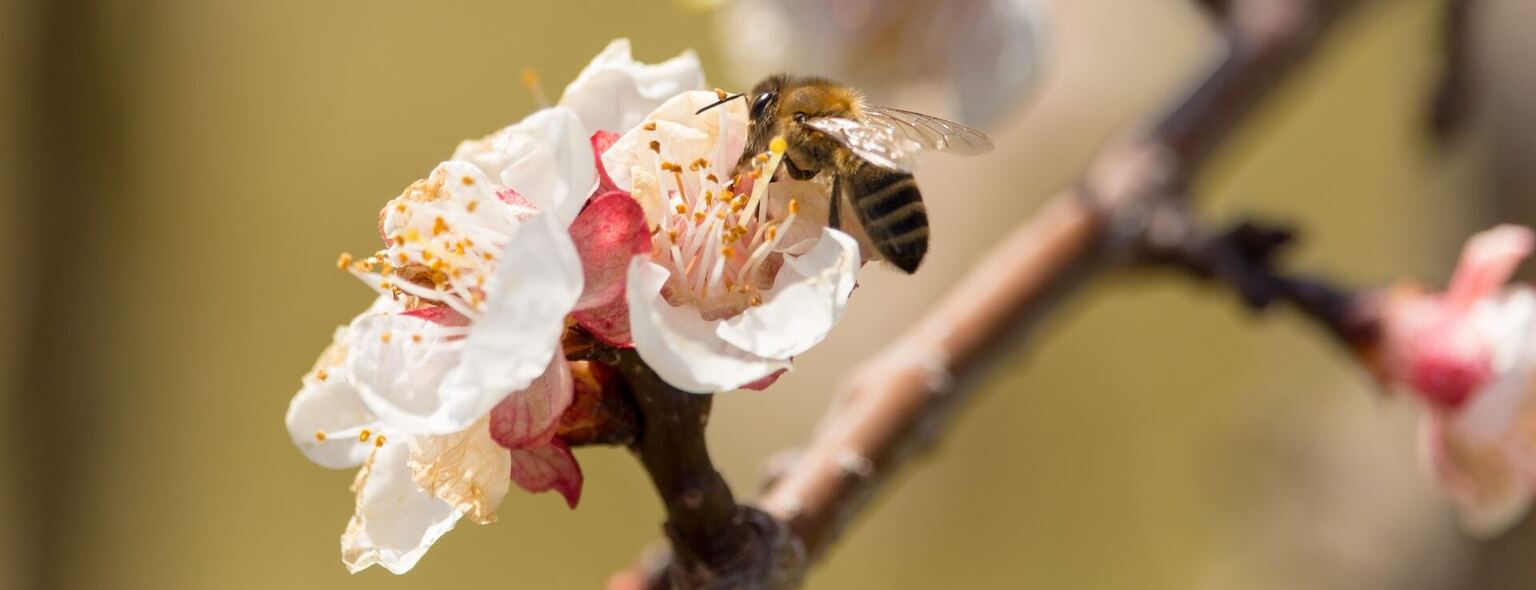Herfstkorting: -15% bij €40 | -20% bij €55
Manukahoning: onzin of niet? De zoete, wetenschappelijke waarheid

Wat is manukahoning?
Wat is het verschil tussen manukahoning en andere honing?
Waarom is manukahoning zo duur?
- Echte manuka is gecertificeerd, maar aan dat certificaat is een prijskaartje verbonden. Manuka moet namelijk verplicht een bepaalde MGO-waarde hebben alvorens je het echt gecertificeerde manuka mag noemen.
- Omdat de manukastruik vaak in onherbergzame gebieden groeit, zijn er vaak helikopterkosten aan het oogsten van de honing verbonden.
- De manukastruik bloeit slechts een paar weken per jaar, dus is de oogst sterk afhankelijk van het weer.
- Manuka is, in vergelijking met andere soorten honing, een zeldzaam product. Zo wordt er per jaar wereldwijd ongeveer 2 miljoen ton honing geproduceerd, waarvan amper 1800 ton manukahoning is.
- Omdat manuka in Nieuw-Zeeland wordt gemaakt, zijn daar hogere transportkosten (en importkosten) aan verbonden.
De zin van manukahoning
- Bacteriële infecties.4
- Wondzorg.5,7
- Tandplak en tandvleesontsteking.6
De onzin van manukahoning
Is manukahoning gevaarlijk?
Hoe gebruik je manukahoning?
Do's:
- Voeg het toe aan gerechten: Gebruik manukahoning als zoetstof in je maaltijden. Voeg het toe aan je ochtendthee, yoghurt, ontbijtgranen of smoothies voor een natuurlijke zoete smaak.
- Gebruik het als huidverzorging: Vanwege de potentiële antibacteriële eigenschappen kan manukahoning een geweldige toevoeging zijn aan je huidverzorgingsroutine. Breng het aan op kleine wondjes, insectenbeten of droge plekjes.
- Let op de MGO-waarde: Kies voor manukahoning met een hogere MGO-waarde (methylglyoxal). Dit geeft aan dat de honing meer van de unieke eigenschappen bevat waarvoor manukahoning bekend staat.
Don'ts:
- Vermijd overmatig gebruik: Hoewel manukahoning mogelijke voordelen biedt, bevat het ook natuurlijke suikers. Overmatig gebruik kan leiden tot een verhoogde inname van suiker, wat niet bevorderlijk is voor je gezondheid.
- Niet verhitten boven 50°C: Bij het gebruik van manukahoning in warme gerechten of dranken, is het raadzaam om verhitting te beperken tot 50°C. Hoge temperaturen kunnen de enzymen en andere nuttige stoffen in de honing namelijk vernietigen.
- Geen vervanging voor medische behandeling: Manukahoning mag nooit worden beschouwd als een vervanging voor medische behandelingen. Raadpleeg altijd een professionele zorgverlener bij ernstige gezondheidsproblemen.
Conclusie: gebruik manuka vooral als een nuttige aanvulling
1. E. Mavric et al., Identification and quantification of methylglyoxal as the dominant antibacterial constituent of Manuka (Leptospermum scoparium) honeys from New Zealand, geraadpleegd via https://pubmed.ncbi.nlm.nih.gov/18210383/
2. K.A. Allen et al., A survey of the antibacterial activity of some New Zealand honeys, geraadpleegd via https://pubmed.ncbi.nlm.nih.gov/1687577/
3. R.A. Cooper et al., Absence of bacterial resistance to medical-grade manuka honey, geraadpleegd via https://pubmed.ncbi.nlm.nih.gov/20549529/
4. M. Johnston et al., Antibacterial activity of Manuka honey and its components: An overview, geraadpleegd via https://pubmed.ncbi.nlm.nih.gov/31294240/
5. P. Molan et al., Honey: A Biologic Wound Dressing, geraardpleegd via https://pubmed.ncbi.nlm.nih.gov/26061489/
6. H.K.P. English et al., The effects of manuka honey on plaque and gingivitis: a pilot study, geraadpleegd via https://pubmed.ncbi.nlm.nih.gov/15125017/
7. S.E. Maddocks et al., Manuka honey inhibits the development of Streptococcus pyogenes biofilms and causes reduced expression of two fibronectin binding proteins, geraadpleegd via https://pubmed.ncbi.nlm.nih.gov/22294681/
8. H. Abuelgasim et al., Effectiveness of honey for symptomatic relief in upper respiratory tract infections: a systematic review and meta-analysis, geraadpleegd via https://pubmed.ncbi.nlm.nih.gov/32817011/
9. K.R. Schell et al., The Potential of Honey as a Prebiotic Food to Re-engineer the Gut Microbiome Toward a Healthy State, geraadpleegd via https://www.ncbi.nlm.nih.gov/pmc/articles/PMC9367972/


